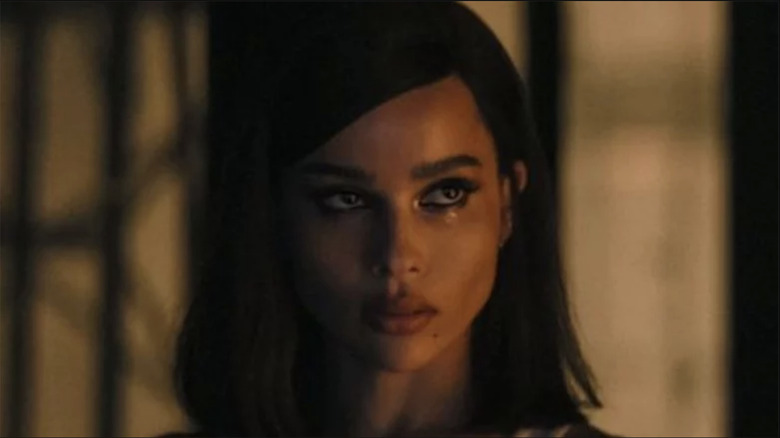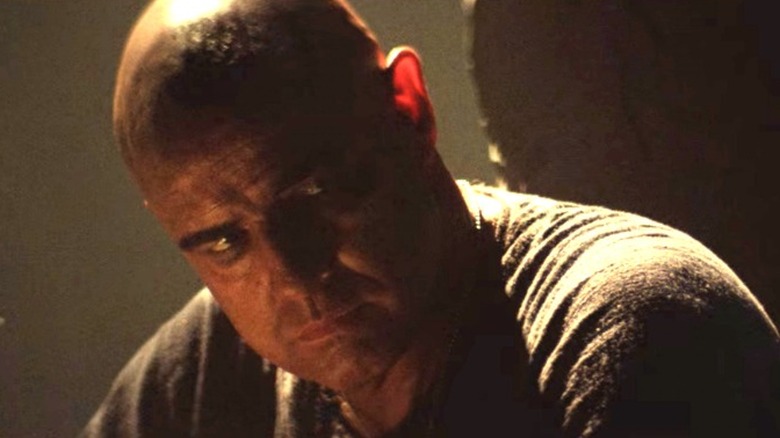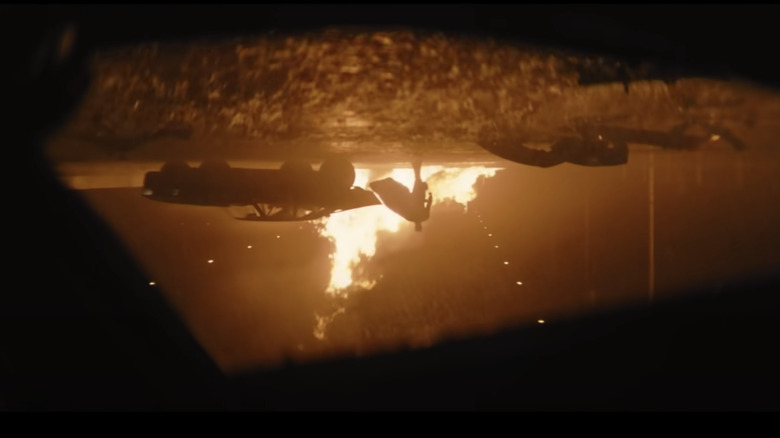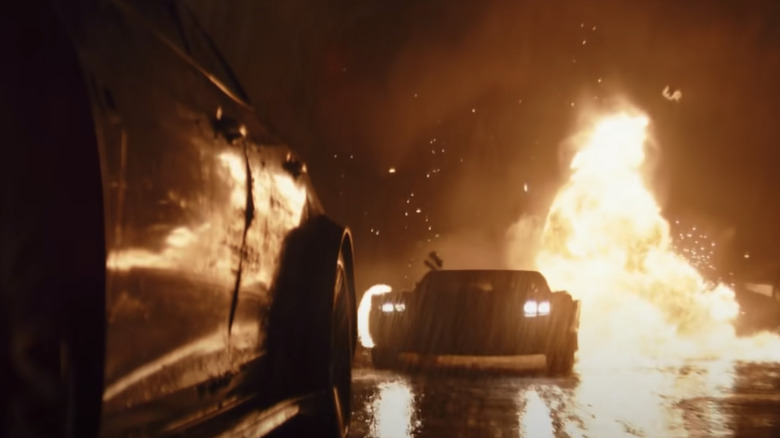How Apocalypse Now Inspired One Of The Batman's Most Iconic Scenes
Matt Reeves, director of "The Batman," has not been shy about his influences for his newest film. With a darker and grittier portrayal of Bruce Wayne (Robert Pattinson), viewers are seeing a version of the caped vigilante in a new light. Pattinson himself has noted that his version of Batman is unique, and stranger than the previous incarnations. This dark take also led to other inspirations for the film. In an interview with Movie Maker, Reeves stated that The Riddler was "molded" by the infamous Zodiac Killer who terrorized Northern California in the 1960s (via Wired).
Reeves' inspirations do not inform the characters alone. The prolific director took inspiration from one of the darkest tales about the war in Vietnam, "Apocalypse Now." Already with incredibly dark subject material, Francis Ford Coppola's film about the horrors of war is haunting and nihilistic. Reeves found ways to honor the award-winning film in "The Batman" while still remaining original.
Reeves wanted Batman to be mythic like Colonel Kurtz
As a symbol for justice, Batman has become a larger-than-life character. His principles and dedication to fighting crime make him an idea rather than a person. The same goes for the antagonist in "Apocalypse Now," though in a vastly different way. Colonel Kurtz (Marlon Brando) is only at the end of the film, but still has a terrifying presence that makes a statement. This was what Matt Reeves was going for in an impressive shot in "The Batman." In an interview with Rotten Tomatoes, Reeves described what he was going for when shooting the sequence.
After Batman has chased down Penguin (Colin Farrell) in the Batmobile, Penguin's car flips and he watches as Batman advances on him. The shot was not directly ripped from "Apocalypse Now," but Reeves wanted to evoke the same feeling that Kurtz demonstrates. When Captain Willard (Martin Sheen) finds Kurtz, he is being worshiped as a demigod by the villagers and has lost all humanity.
Reeves stated that he sees Batman as "mythic," similar to the symbol of terror that Kurtz becomes. Kurtz has lost his mind and has become less of a character and more of a frightening figure. When Penguin sees Batman, it is the same idea. Batman is no longer a man, but something bigger. The audience sees Batman from Penguin's point of view and should feel the same overwhelming sensation that the character does.
Batman's connection to Kurtz is unsettling for a reason
The most startling thing about this insight is that while Batman is supposedly fighting villainous characters such as Penguin, he is not a hero himself. Matt Reeves has elegantly created a moment that not only calls back to emotions from "Apocalypse Now," but the content as well. Batman is upside down because the audience is viewing him from Penguin's point of view. Reeves told Rotten Tomatoes that he was interested in the idea of "subjectivity" and watching scenes from different characters' points of view. From Penguin's perspective, Batman is the villain. He is the one who has run him down in a car chase and may even have a chance of winning against him.
In this scene, Batman is more like Colonel Kurtz than is comfortable. Kurtz has lost his mind to the Vietnam War, preferring to stay in a village where he has become a deity. Batman's dedication to fighting crime has the same reverence — he has become more of a symbol and is not seen as just a person.
Reeves went an interesting route to get the shot he wanted
Matt Reeves is no stranger to using perspectives to his advantage. His 2008 film "Cloverfield" was shot exclusively from a first person point of view. But in "The Batman," he has outdone himself. When initially making his shot list, the director did not just list out the shots he wanted, but was able to explore the potential in VR.
Virtual reality allowed Reeves to find what worked best for the film. He revealed to Rotten Tomatoes that the chase scene between Penguin and Batman can get "very technical" — and judging from the footage, quite complicated. His greatest hope was that audiences would "connect" with the material. Because of this freedom, Reeves was able to find a resonant shot that has become one of the most well-known images of the film. He stated that he was happy to know that it did indeed turn out to connect with fans.
"The Batman" is becoming one of the most talked about films of the year with a Certified Fresh rating on Rotten Tomatoes. All of Reeves' efforts have seemed to pay off.



